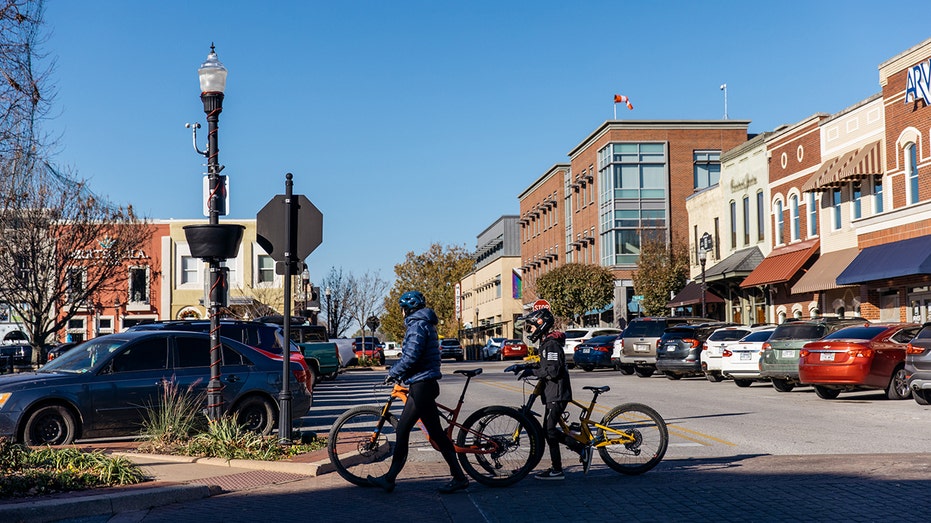HANOI: Vietnam is gradually perfecting its policy and legal framework to enhance the capacity for biodiversity conservation.
Hoang Thi Thanh Nhan, deputy director of the Natural Resources and Environment Ministry’s Natural Conservation and Biodiversity Department, told Tai Nguyen Moi Truong (Natural Resources and Environment) newspaper that from now until the end of the decade would be an important period for ministries, sectors and localities to take action.
The priority is to continue improving policies and regulations to enhance biodiversity conservation capacity.
The policy and legal framework need to be reviewed to ensure systematic, unified and updated requirements to fulfill Vietnam’s international commitments and practical needs, said Nhan.
As the lead agency for the Biodiversity Convention in 2023, the Natural Resources and Environment Ministry submitted a draft National Biodiversity Conservation Plan for the period of 2021 to 2030, with a vision to 2050, and a draft strategy for 2030, with a vision towards 2050.
It highlighted wildlife conservation, especially endangered species, for the Prime Minister’s approval.
Specialised agencies are also urgently perfecting and amending related content in decrees and circulars, providing detailed guidance and implementation of some provisions of the Environmental Protection Law.
These include content on biodiversity impact assessment, biodiversity compensation, environmental heritage management and protection plans.
The system of policy and legal documents, combined with dissemination efforts to enhance awareness and responsibility for nature and biodiversity conservation, has helped promote widespread conservation activities within the community.
Many localities and businesses have made nature conservation and biodiversity a criterion for sustainable and green development.
This is a positive signal for Vietnam, as building a harmonious society with nature has become a common model for many countries worldwide.
According to the Natural Conservation and Biodiversity Department, in 2024, the department will begin a 15-year assessment of the implementation of the Law on Biodiversity.
This will lay the groundwork for proposing amendments to the Law on Biodiversity in 2028.
Meanwhile, research will be conducted to propose mechanisms, policies and management measures for protecting natural landscapes and establishing management mechanisms for conservation areas beyond protected areas.
Although Vietnam is recognised as the 16th country in terms of possessing some of the world’s richest biodiversity, including rare and valuable genetic resources, it is currently grappling with swift biodiversity degradation.
The nation is confronted with significant challenges such as environmental pollution, land degradation, ocean plastic pollution and other severe impacts of climate change.
According to Pham Minh Thao, the director of World Wildlife Fund Vietnam’s Programme Development, while forests still exist, under the forest canopy, there is a loss of wildlife habitats and a decline in species diversity.
Without timely action, many endangered species will face extinction, leading to biodiversity loss.
Nguyen Manh Ha, director of the Nature Conservation and Development Centre, said that the state budget currently does not adequately meet the needs for biodiversity conservation in implementing basic management and research tasks.
Therefore, there was a need for a new financial mechanism and policies to attract external resources.
Vietnam could establish mechanisms to encourage the participation of Vietnamese people and businesses in investing in biodiversity conservation, or new mechanisms for ecosystem service payments outside forest ecosystems and policies to encourage individual and corporate tax contributions to biodiversity conservation.
Additionally, there was a need for biodiversity credit mechanisms, access to carbon credit markets, debt swap mechanisms for nature conservation, green bonds and green credits, he added.
Tran Quang Bao, director of the Forestry Department, said that the department is to compile regulations to provide a legal basis for specialised forest management boards to implement collaborative forest leasing for businesses and individuals organising ecotourism.
With areas outside natural reserves lacking strict protection, Vietnam is moving towards an integrated approach to sustainable economic development with the participation of local communities, which will significantly increase the area of conserved ecosystems.
As part of its participation in the global biodiversity framework, Vietnam is committed to ensuring that 30% of land and sea areas will be conserved through the establishment of reserves and other effective area-based conservation measures (OECMs) by 2030.
According to the International Union for Conservation of Nature (IUCN), the OECMs not only help Vietnam meet conservation commitments with the international community but also allow for the protection of highly threatened biodiversity hotspots.
They are natural buffer zones of reserves, buffer zones of conservation areas, natural production forests, areas protecting fishery resources, areas with high biodiversity outside reserves, biodiversity corridors, important wetland areas, important ecological landscapes and national tourism sites. — Viet Nam News/ANN


